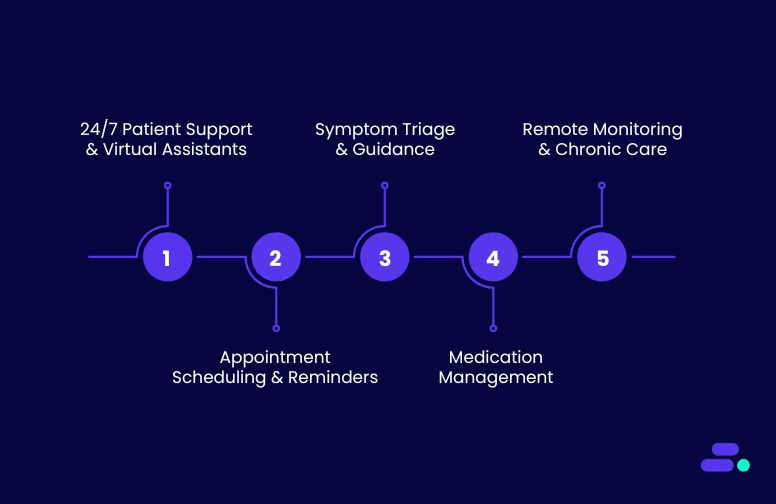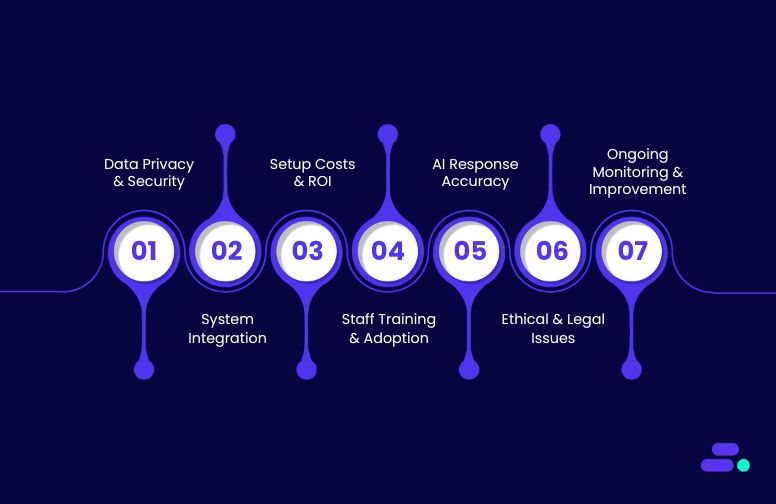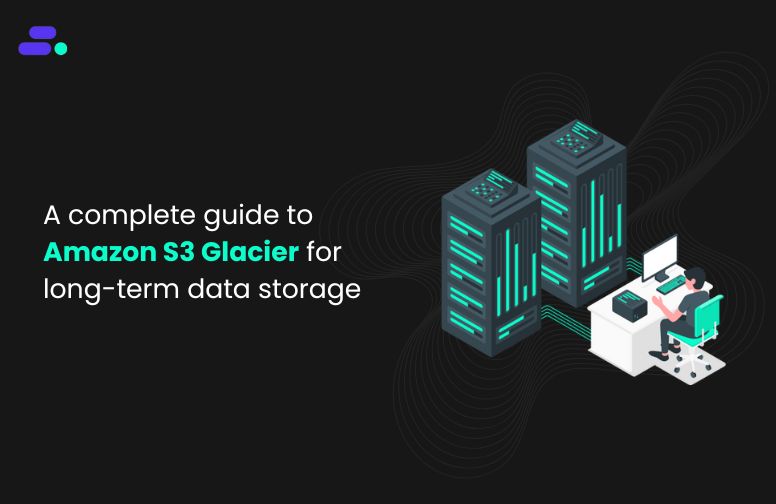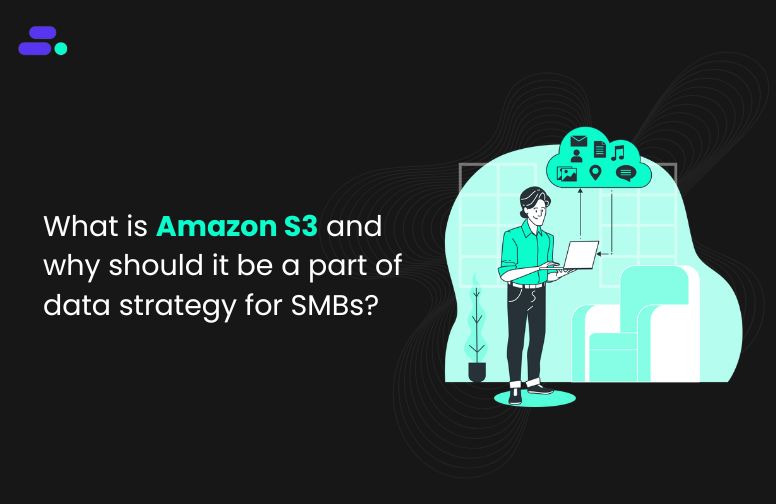This is a div block with a Webflow interaction that will be triggered when the heading is in the view.

Modernize your cloud. Maximize business impact.
In any industry, decisions are only as strong as the data behind them. When information is incomplete, inconsistent, or outdated, the consequences can range from lost revenue and compliance issues to reputational damage. For some sectors, however, the stakes are far higher.
In healthcare, the cost of poor data quality isn’t just financial, it can directly affect patient safety. Imagine a clinic relying on electronic health records (EHR) where patient allergy information is outdated or inconsistent across systems. A doctor prescribing medication based on incomplete data could trigger a severe allergic reaction, leading to emergency intervention.
This article explores why data quality matters, the risks of ignoring it, and how to build a framework that maintains accuracy from raw ingestion to AI-ready insights.
Key takeaways:
- Data quality directly impacts business insights, compliance, and operational efficiency.
- Poor-quality data in legacy or fragmented systems can lead to costly errors post-migration.
- AWS offers powerful tools to clean, govern, and monitor data at scale.
- Embedding quality checks and security into pipelines ensures long-term trust in analytics.
- Cloudtech brings AWS-certified expertise and an SMB-focused approach to deliver clean, reliable, and future-ready data.
Why is clean data important for SMB growth?
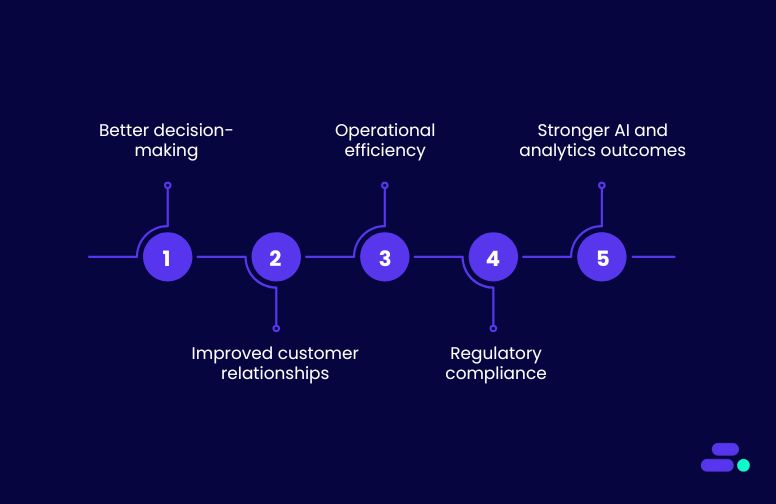
Growth often hinges on agility, making quick, confident decisions and executing them effectively. But agility without accuracy is a gamble. Clean, reliable data ensures that every strategy, campaign, and operational move is based on facts, not assumptions.
When data is riddled with errors, duplicates, or outdated entries, it not only skews decision-making but also wastes valuable resources. From missed sales opportunities to flawed forecasts, the ripple effect can slow growth and erode customer trust.
Key reasons clean data fuels SMB growth:
- Better decision-making: Accurate data allows leaders to spot trends, forecast demand, and allocate budgets with confidence.
- Improved customer relationships: Clean CRM data means personalized, relevant communication that strengthens loyalty.
- Operational efficiency: Fewer errors reduce time spent on manual corrections, freeing teams to focus on growth activities.
- Regulatory compliance: Clean, well-governed data helps SMBs meet industry compliance standards without last-minute scrambles.
- Stronger AI and analytics outcomes: For SMBs using predictive models or automation, clean data ensures reliable, bias-free insights.
In short, clean data is a growth enabler. SMBs that invest in data hygiene are better positioned to respond to market shifts, innovate faster, and scale without hitting operational roadblocks.

How to keep data accurate and reliable from start to finish?
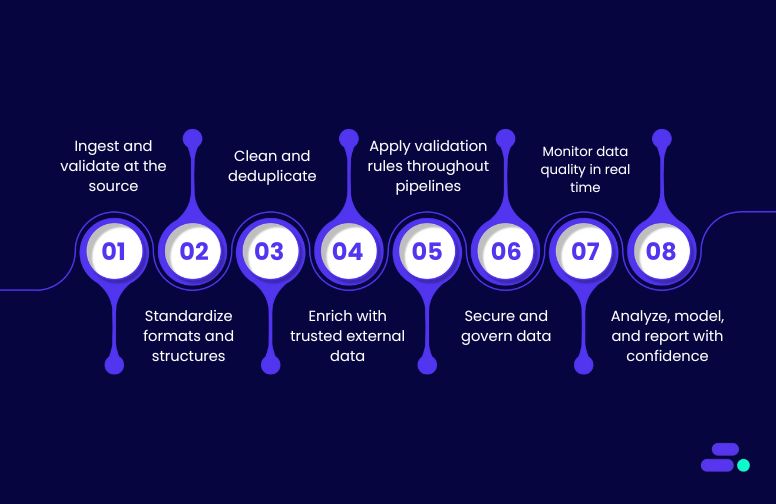
Data quality starts at the source and must be protected at every step until it drives decisions. For SMBs, that means capturing accurate data, cleaning and standardizing it early, enriching it where relevant, and validating it continuously.
Real-time monitoring and strict governance prevent errors from slipping through, ensuring analytics and AI models run on trusted information. With the right AWS tools, these safeguards become a built-in part of the workflow, turning raw data into reliable insights.
1. Ingest and validate at the source
The moment data enters the system is the most critical point for quality control. If inaccurate, incomplete, or incorrectly formatted data slips in here, those errors spread across every system that touches it, multiplying the damage and making later fixes far more expensive.
By validating at the source, businesses ensure every subsequent stage is working with a reliable baseline, reducing operational risks and improving downstream analytics.
How to achieve data quality with AWS:
- AWS Glue DataBrew: Profiles data on arrival, detecting missing fields, format mismatches, and anomalies. Applies rules to standardize formats (e.g., timestamps to UTC) and flags suspicious records before storage, ensuring only clean data enters the pipeline.
- Amazon Kinesis Data Streams: Validates streaming data in real time, checking schema, detecting duplicates, and enforcing thresholds. Invalid records are quarantined via Dead Letter Queues, while only verified entries move forward, keeping downstream data pristine.
The outcome: Without this step, a business might load customer records with misspelled names, incorrect email formats, or mismatched account IDs into its CRM. Over time, marketing campaigns would be sent to the wrong people, invoices might bounce, and sales teams would waste hours chasing invalid leads, all while decision-makers base strategies on flawed reports.
With validation at the source, these errors are caught immediately, ensuring only accurate, properly formatted records enter the system. Teams work with clean, unified customer data from day one, campaigns reach the right audience, billing runs smoothly, and leaders can trust that the insights they act on truly reflect the business reality.
2. Standardize formats and structures
Disparate data formats, whether from legacy systems, SaaS platforms, or third-party feeds, create friction in analytics, integration, and automation. If formats and structures aren’t aligned early, teams face mismatched schemas, failed joins, and incomplete reports later.
Standardization ensures every dataset speaks the same “language,” enabling seamless processing and accurate insights across systems.
How to achieve data quality with AWS:
- AWS Glue: Automatically crawls incoming datasets to detect schema and metadata, then applies transformations to unify formats (e.g., converting all date fields to ISO 8601, aligning column names, or normalizing units like “kg” and “kilograms”). Supports creation of a centralized Data Catalog so downstream processes reference a single, consistent schema.
- AWS Lambda: Executes lightweight, event-driven format conversions on the fly. For example, when a CSV file lands in Amazon S3, Lambda triggers to convert it into Parquet for analytics efficiency or apply consistent naming conventions before it’s stored in the data lake.
The outcome: Without this step, a business pulling sales data from different regions might find that one source logs dates as MM/DD/YYYY, another as DD-MM-YYYY, and a third uses month names. When combined, these mismatches could cause analytics tools to misread timelines, drop records, or produce skewed trend reports—leaving leadership with conflicting or incomplete views of performance.
With standardized formats and structures, all sources align to a single schema before they ever reach the analytics layer. Joins work flawlessly, reports reflect the complete picture, and automation such as forecasting models or cross-system updates runs without breaking. The result is faster decision-making and a single source of truth everyone can trust.
3. Clean and deduplicate
Even with validation and standardization in place, datasets can still contain outdated, inconsistent, or duplicated records that distort analytics and decision-making. Without regular cleanup, errors accumulate, causing inflated counts, skewed KPIs, and flawed business insights.
Cleaning and deduplication preserve the integrity of datasets so every query, dashboard, and model is built on a trustworthy foundation.
How to achieve data quality with AWS:
- AWS Glue DataBrew: Provides a visual interface to detect and fix inconsistencies such as typos, out-of-range values, and formatting anomalies without writing code. Enables rule-based deduplication (e.g., match on customer ID and timestamp) and bulk corrections to standardize values across large datasets.
- Amazon EMR: Processes massive datasets at scale using Apache Spark or Hive for complex deduplication and cleaning logic. Ideal for historical cleanup of years’ worth of data, matching across multiple tables, and applying advanced fuzzy-matching algorithms.
The outcome: Without this step, a business’s customer database might list the same client three times under slightly different names, “Acme Corp,” “ACME Corporation,” and “Acme Co.”, with varying contact details. This inflates customer counts, leads to multiple sales reps contacting the same account, and produces misleading revenue metrics.
With cleaning and deduplication in place, duplicate and inconsistent entries are merged into a single, accurate record. Dashboards now reflect the true number of customers, sales outreach is coordinated, and reports give leadership a clear, reliable view of performance. The result is leaner operations, better customer relationships, and more trustworthy KPIs.

4. Enrich with trusted external data
Raw internal data often lacks the context needed for richer analysis and better decision-making. By supplementing it with verified external datasets such as demographic profiles, market trends, or geospatial data, businesses can unlock new insights, personalize services, and improve predictive accuracy.
However, enrichment must be done using reputable sources to avoid introducing unreliable or biased data that could undermine trust in the results.
How to achieve data quality with AWS:
- AWS Data Exchange: Provides access to a marketplace of curated third-party datasets, such as weather, financial, demographic, or geospatial data. Ensures data is sourced from verified providers and integrates directly into AWS analytics and storage services for seamless use.
- Amazon API Gateway: Allows secure, scalable ingestion of data from trusted APIs, such as government databases or industry-specific data providers, into the business pipelines. Includes throttling, authentication, and schema validation to ensure only clean, expected data enters the system.
The outcome: Without this step, a business might rely solely on its internal sales records to forecast demand, missing the fact that upcoming regional weather events or market shifts could heavily influence buying patterns. As a result, inventory might be overstocked in low-demand areas and understocked where demand will spike, leading to lost sales and wasted resources.
With enrichment from trusted external sources, internal data is layered with context, such as weather forecasts, demographic profiles, or local economic trends, allowing predictions to reflect real-world conditions. This enables smarter stocking decisions, targeted marketing, and more accurate forecasts, turning raw operational data into a competitive advantage.
5. Apply validation rules throughout pipelines
Data that passes initial ingestion checks can still be corrupted mid-pipeline during transformation, enrichment, or aggregation. Without embedded safeguards, subtle errors like mismatched currency codes, invalid status values, or noncompliant field entries can propagate unnoticed, contaminating downstream analytics and compliance reporting.
Continuously applying validation rules at every stage ensures data remains accurate, compliant, and analysis-ready from source to destination.
How to achieve data quality with AWS:
- AWS Glue Studio: Allows businesses to design ETL workflows with built-in validation logic, such as conditional checks, pattern matching, and field-level constraints, to automatically flag or quarantine suspect records before they reach output tables.
- AWS Step Functions: Orchestrates complex data workflows and integrates validation checkpoints between steps, ensuring only clean, compliant data progresses. Can trigger automated remediation workflows for records that fail checks.
The outcome: Without this step, a business might approve clean financial transactions at ingestion, only for a mid-pipeline transformation to accidentally swap currency codes, turning USD amounts into EUR values without conversion. These subtle errors could slip into financial reports, misstate revenue, and even cause compliance breaches.
With validation rules applied throughout the pipeline, every transformation and aggregation step is monitored. Invalid entries are caught instantly, quarantined, and either corrected or excluded before reaching the final dataset. This keeps analytics accurate, compliance intact, and ensures leadership never has to backtrack decisions due to hidden data corruption.
6. Secure and govern data
Even the cleanest datasets lose value if they’re not protected, properly governed, and traceable. Without strict access controls, unauthorized users can alter or leak sensitive information; without governance, teams risk working with outdated or noncompliant data; and without lineage tracking, it’s impossible to trace errors back to their source.
Strong security and governance not only protect data but also maintain trust, enable regulatory compliance, and ensure analytics are based on reliable, approved sources.
How to achieve data quality with AWS:
- AWS Lake Formation: Centralizes governance by defining fine-grained access policies at the table, column, or row level. Ensures only authorized users and services can view or modify specific datasets.
- AWS IAM (Identity and Access Management): Manages authentication and permissions, enforcing the principle of least privilege across all AWS services.
- AWS CloudTrail: Records every API call, configuration change, and access attempt, creating a complete audit trail to investigate anomalies, verify compliance, and maintain data lineage.
The outcome: Without this step, a business might have clean, well-structured datasets but no guardrails on who can access or change them. A single unauthorized edit could overwrite approved figures, or sensitive customer data could be exposed—leading to regulatory penalties, reputational damage, and loss of customer trust. When errors occur, the lack of lineage tracking makes it nearly impossible to pinpoint the cause or fix the root issue.
With robust security and governance in place, every dataset is protected by strict access controls, changes are fully traceable, and only approved, compliant versions are used in analytics. This safeguards sensitive information, ensures teams always work with the right data, and gives leadership full confidence in both the accuracy and integrity of their insights.

7. Monitor data quality in real time
Even well-structured pipelines can let issues slip through if data isn’t continuously monitored. Without real-time quality checks, anomalies such as sudden spikes, missing values, or unexpected formats can silently propagate to dashboards, machine learning models, or production systems, leading to bad decisions or customer-facing errors.
Continuous monitoring ensures problems are caught early, minimizing downstream impact and preserving confidence in analytics.
How to achieve data quality with AWS:
- Amazon CloudWatch: Tracks operational metrics and custom quality indicators (e.g., row counts, null value percentages) in near real-time. Can trigger alerts or automated remediation workflows when thresholds are breached.
- AWS Glue Data Quality: Automatically profiles datasets, generates quality rules, and monitors for deviations during ETL jobs, enabling proactive intervention when issues arise.
The outcome: Without this step, a business could invest heavily in analytics and AI only to base decisions on flawed inputs, leading to dashboards that exaggerate sales growth, forecasts that miss market downturns, or machine learning models that recommend unprofitable actions. These errors can cascade into poor strategic choices, wasted resources, and missed opportunities.
With only validated, high-quality data feeding analytics and models, insights are accurate, forecasts reflect reality, and AI recommendations align with business goals. Decision-makers can act quickly and confidently, knowing that every chart, prediction, and automation is grounded in facts rather than flawed assumptions.
8. Analyze, model, and report with confidence
The final step in the data lifecycle is where clean, trusted data delivers tangible business value. If earlier stages fail, BI dashboards may mislead, predictive models may drift, and AI applications may produce unreliable outputs.
By ensuring only validated, high-quality datasets reach analytics and modeling environments, SMBs can make confident decisions, forecast accurately, and automate with minimal risk.
How to achieve data quality with AWS:
- Amazon QuickSight: Connects directly to curated datasets to build interactive dashboards and visualizations. Filters, parameters, and calculated fields can ensure only trusted data is displayed, preventing misleading KPIs.
- Amazon SageMaker: Trains and deploys machine learning models on cleansed datasets, reducing bias, improving accuracy, and avoiding garbage-in/garbage-out pitfalls.
The outcome: Without this step, leadership might rely on BI dashboards built from incomplete or inconsistent datasets showing inflated sales, underreporting expenses, or misclassifying customer segments. Predictive models could drift over time, making inaccurate forecasts or recommending actions that hurt rather than help the business.
With only validated, trusted data powering analytics and models, every report reflects reality, forecasts anticipate market shifts with greater accuracy, and AI applications operate on solid foundations. This gives decision-makers the clarity and confidence to act decisively, knowing their insights are both accurate and actionable.

AWS tools enable strong data pipelines, but flawless execution needs expertise. AWS Partners like Cloudtech bring certified skills and SMB-focused strategies to ensure data stays accurate, secure, and analytics-ready, freeing teams to focus on growth, not fixes.
How does Cloudtech help SMBs maintain and utilize high-quality data?
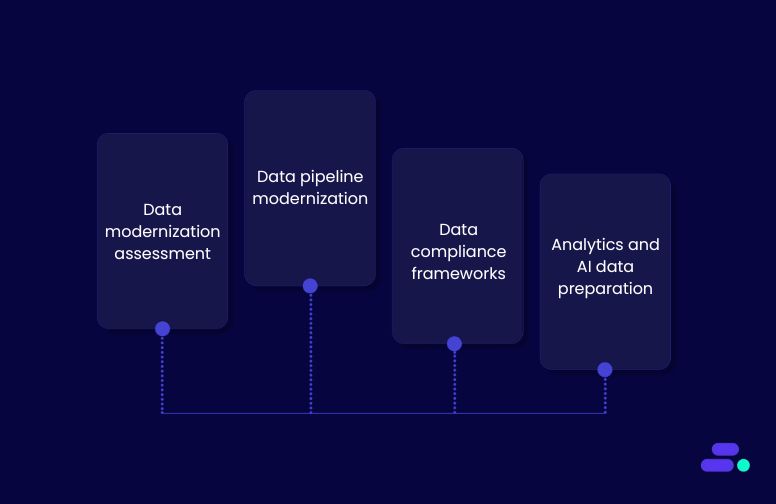
Improving data quality isn’t just a technical exercise, but ensuring every decision is backed by accurate, trusted insights. This is where AWS Partners like Cloudtech add real value. They bring certified expertise, proven frameworks, and direct alignment with AWS best practices, helping businesses avoid costly trial-and-error.
Cloudtech stands out for its SMB-first approach. Rather than applying enterprise-heavy solutions, Cloudtech designs lean, scalable data quality frameworks that fit SMB realities, like tight budgets, fast timelines, and evolving needs:
- Cloudtech’s data modernization assessment: A business-first review of the customer’s current data systems to identify quality issues, compliance gaps, and the most impactful fixes before any migration or changes begin.
- Cloudtech’s pipeline modernization: Uses AWS Glue, Step Functions, and Kinesis to automate cleaning, standardize formats, and remove duplicates at scale for consistent, reliable data.
- Cloudtech’s data compliance frameworks: Implements governance with AWS IAM, CloudTrail, and AWS Config to protect sensitive data and ensure full audit readiness.
- Cloudtech’s analytics and AI data preparation: Prepares accurate, trusted datasets for Amazon QuickSight, SageMaker, and Amazon Q Business, so insights are dependable from day one.
With Cloudtech, SMBs get a clear, secure, and repeatable framework that keeps data quality high, so teams can trust their numbers and act faster.

Wrapping up
Ensuring clean, trusted data is no longer optional. It’s a competitive necessity. But achieving consistently high-quality data requires more than one-off fixes. It demands ongoing governance, the right AWS tools, and a partner who understands both the technology and the unique realities of SMB operations.
Cloudtech combines AWS-certified expertise with a human-centric approach to help businesses build data pipelines and governance frameworks that keep data accurate, secure, and ready for insight.
Ready to make your data a business asset you can trust? Connect with Cloudtech.
FAQs
1. How can poor data quality hurt business growth, even if systems are in the cloud?
Moving to the cloud doesn’t automatically fix inaccurate or incomplete data. If errors exist before migration, they’re often just “copied and scaled” into the new system. This can lead to faulty insights, misguided strategies, and operational inefficiencies. Cloudtech’s approach ensures only high-quality, verified data enters AWS environments, so the benefits of the cloud aren’t undermined by old problems.
2. Does data quality impact compliance and audit readiness?
Yes, compliance frameworks like HIPAA, FINRA, or GDPR require not just secure data, but accurate and traceable records. Inconsistent data formats, missing fields, or unverified sources can trigger audit failures or penalties. Cloudtech’s governance design with AWS Lake Formation, IAM, and CloudTrail ensures compliance and traceability from day one.
3. Can SMBs maintain high data quality without hiring a large data team?
They can. Cloudtech uses AWS-native automation such as AWS Glue DataBrew for cleaning and CloudWatch alerts for anomalies, so SMBs don’t need to rely on constant manual checks. These tools allow a lean IT team to maintain enterprise-grade data quality with minimal overhead.
4. How does better data quality translate into faster decision-making?
When datasets are accurate and consistent, reports and dashboards refresh without errors or missing figures. That means leadership teams can act in real time rather than waiting for data clean-up cycles. Cloudtech’s workflows ensure analytics platforms like Amazon QuickSight and AI models in SageMaker can deliver insights instantly and reliably.
5. What’s the first step Cloudtech takes to improve data quality?
Every engagement starts with a Data Quality & Governance Assessment. Cloudtech’s AWS-certified architects evaluate current datasets, data flows, and governance structures to identify hidden issues such as duplicate entries, conflicting sources, or security gaps before designing a tailored remediation and modernization plan.

Get started on your cloud modernization journey today!
Let Cloudtech build a modern AWS infrastructure that’s right for your business.

